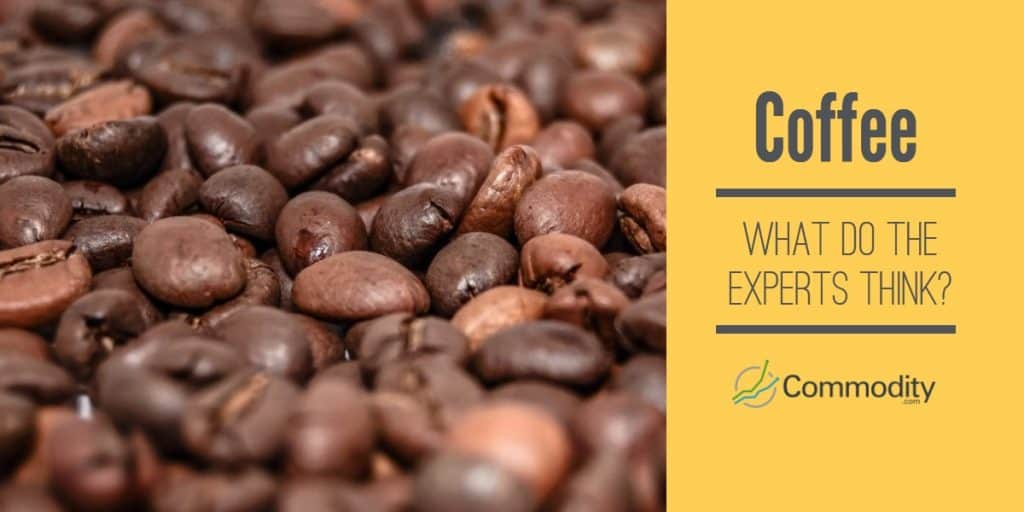

Coffee is the world’s most popular soft commodity. It has jocularly been referred to as the most popular legal drug, but it remains one of the most viable tradable assets on the market. Owing to high volatility, there is substantial profit potential in this commodity with high levels of intraday liquidity. Coffee futures contracts offer enticements to traders to generate healthy returns. The fact of the matter is that coffee trading is a tough business. This is true because trades can be decimated in moments, thereby creating substantial financial concerns for traders. Before you immerse yourself in the flavourful world of coffee investments, it should be noted that coffee is traded on exchanges. Coffee futures are typically traded on one of three exchanges, including the following: Tokyo Grain Exchange, the New York Mercantile Exchange, and the Intercontinental Exchange.
The Tokyo Grain Exchange (TGE) offers contracts on coffee with 3,450 kg (50 bags) per contract. The prices of these futures coffee contracts are listed in yen. The contracts can be traded for the following months: January-March-May-July-September-November. The New York Mercantile Exchange (NYMEX) ranks among the most popular exchanges for trading coffee futures. Contracts are available for the following months: March-May-July-September-December. Contracts are in USD per pound of coffee. The weight of each contract is 37,500 lbs. Coffee trading (as with other soft commodities) is active from Sunday through Friday for 23 hours daily. The Intercontinental Exchange (ICE) offers coffee trades under the KC ticker. Contracts on the ICE exchange are active for March-May-July-September-December.
Brief History of Coffee Commodities
In terms of coffee exports, Brazil leads the way. Green coffee beans are utilized for the production of coffee. During 2011, Brazil exported over 4.34M tonnes of coffee – far greater than its nearest competitor Vietnam at 2M tonnes of coffee. The other major coffee exporting countries include Indonesia, Colombia, Ethiopia, Peru, India, Honduras, Mexico and Guatemala. The world’s largest coffee consumer is the United States, but European countries such as Italy and Germany are close behind. Several developed nations also export coffee, but it is not yet clear whether the coffee is processed or raw. One of the world’s most popular coffee houses is Starbucks with a rapidly growing number of chains everywhere. In terms of coffee houses and chains, these account for approximately 40% of market share. The remaining 60% of coffee sales take place in supermarkets and by way of private retailers.
Two coffee beans are traded on the markets: Arabica beans and Robusta beans. Price wise, Arabica coffee beans are more expensive than Robusta coffee beans. The major coffee companies include Sara Lee, Kraft, Procter and Gamble and Nestle. The price differential between Arabica coffee beans and Robusta coffee beans has narrowed in recent years as companies have been purchasing increasing amounts of Robusta beans of late. Coffee is also graded according to quality, based on where it was harvested. The base countries on the rating scale are Kenya, Mexico and Costa Rica. Higher grade countries include Costa Rica while lower grade countries include Venezuela, India and Burundi. Coffee is now increasingly being traded in the form of binary options, where simple call and put options can be placed. This way, traders can enter the market with minimal outlay and knowledge, with maximum yield when trades finish in the money.
Best Trading Strategies for Coffee Futures
Since it is possible to trade coffee throughout the year it is important for investors to understand precisely which timeframes provide the best possible opportunities. In this vein, harvest seasons come into play. It should also be remembered that weather and climactic conditions play an integral part in the process. Coffee prices are highly reactive to things like temperature, drought, flooding and other factors. Futures are however not the only way to trade coffee, and indeed this method is highly risky for most. As a novice or intermediate-level trader, it is perhaps best to consider other alternatives such as ETFs. These include the Pure Beta Coffee ETN (CAFÉ), the Dow Jones-UBS Coffee ETN (JO), or the Dow Jones-UBS Softs Total Return Sub-Index ETN (JJS). All of the aforementioned exchange traded products have an expense ratio of 0.75%.
When you trade coffee, you agree to take delivery of a specific quantity of coffee from the seller at a pre-set price and delivery date. It is possible to manage your overall risk by buying and selling coffee futures. By using short hedges to lock in selling prices for coffee and long hedges to lock in purchase prices, it is possible to create an effective trading strategy. Speculators also trade coffee futures. These traders attempt to generate profits from price movements by purchasing coffee futures when prices are expected to rise and selling coffee futures when prices are expected to fall. A long position works with a call option and a short position is adopted with a put option. Bullish coffee traders purchase call options and bearish coffee traders purchase put options. There are other ways for traders to engage in coffee trading, including option selling and spreads.
How Coffee Options Offer Added Advantages Over Coffee Futures
There are many additional benefits available to traders who select options over futures. For starters, the added flexibility of coffee options makes it possible to implement multiple strategies. This means it is possible to work within the parameters of a particular cost structure, risk profile and investment timeline. With options, there is also the time component. As the passage of time takes place, so the time value of the option is eroded. With coffee options and all other options it is possible to be a buyer and a seller of options too. Other benefits available to traders of coffee options are the added leverage and being able to limit potential losses.